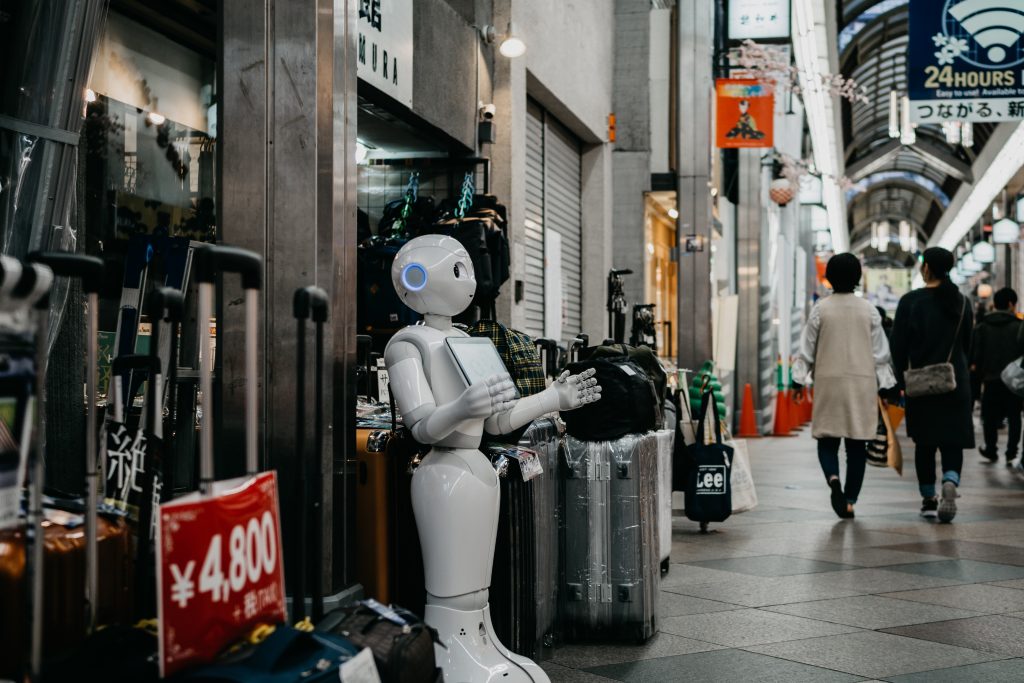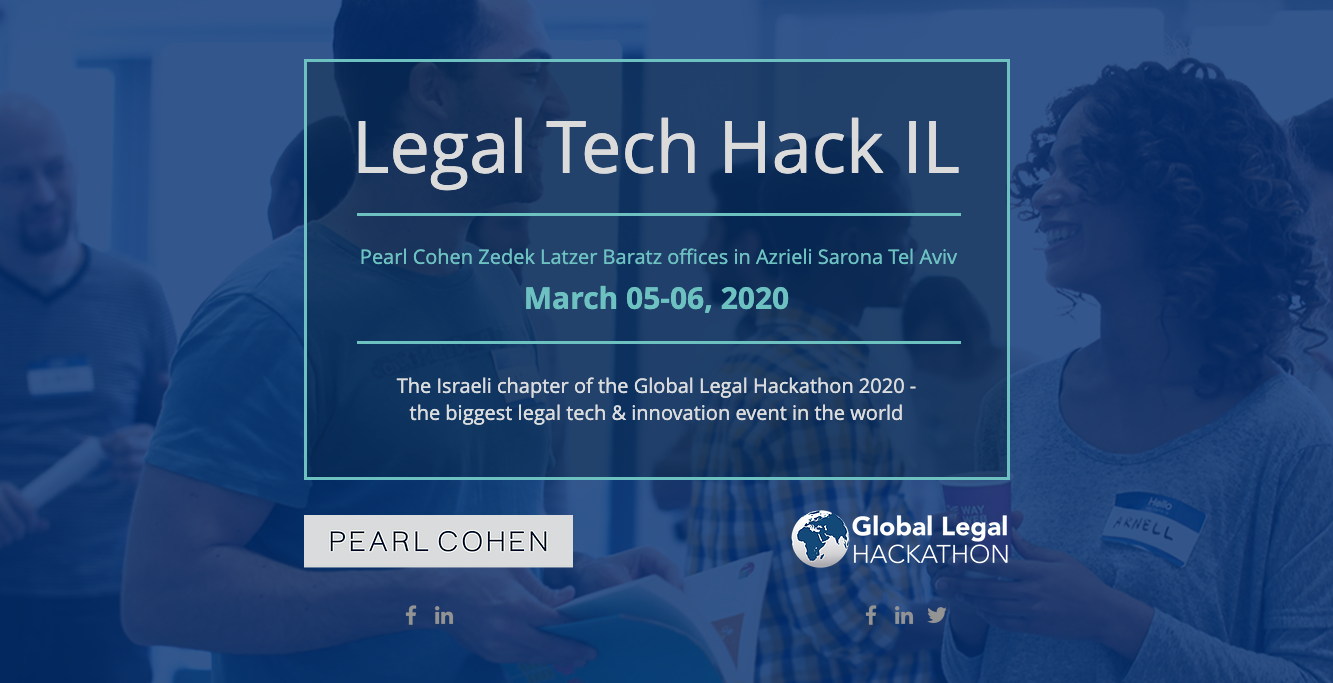
Or Bakai
head of legal-tech department
Anat Lior is a J.S.D. candidate at Yale Law School and a Resident Fellow with the School’s Information Society Project. Her research focuses on the intersection of Artificial Intelligence (AI) and torts, the way AI should be regulated ex-ante and ex-post using the tort law system and administrative law, and the usage of legal fictions in the regulation of new technological advancements. She chose to research this field after learning about AI’s pervasive effects in the field of criminal justice and commercial use and its inevitable wide effect on almost every aspect of our lives.
A few months ago, a colleague has reached out to me saying that there is an Israeli J.S.D candidate at Yale Law School that is writing a fascinating dissertation about AI and its affiliation with the legal system. Naturally, this highly intrigued me and after making a bit of research I reached out to Anat. Needless to say that I was very excited to read samples of her articles and shortly after invited her to answer a few questions that I’m certain will interest many lawyers and other players in the legal industry about AI and its future in the legal system for the Tech&Law blog – so thank you for agreeing to do this interview and without further delay, let’s begin with the questions.
“Lawyers can defiantly benefit from AI and they already do. Some AI based software solutions for lawyers have already penetrated the market and are being adopted in the US and around the world”
Tech&Law: What is AI?
Anat Lior: AI is a general term that describes machines and algorithms capable of preforming tasks we previously thought only humans can successfully accomplish. At the risk of immensely oversimplifying the science, AI is considered to be a machine or an algorithm which reaches conclusions and makes decisions without the intervention of humans. Machine Learning, a branch of AI, uses the initial code and data base to teach itself the “correct” or “best” decision. It looks for patterns in the data set (its “training set”) to create certain thumb rules, for example, indicators that imply that a certain email is spam, such as certain references and unfamiliar IP addresses. After it identifies these rules, it can apply them to future information we run through it. It is not always correct, as we can see when a spam email finds its way to our inbox and vice versa, but it refines its set of rules in light of mistakes it makes, thus minimizing its errors over time.
Another sub branch of AI is “Neural Network” in which an algorithm classifies information, such as images and sounds, into specific categories based on common characteristics. This sub branch is usually used as a pattern recognition software. These algorithms are used to identify handwritings, pictures and speech.
It is important to emphasize human beings, for the most part, can and do perform these tasks, but AI is offering to accomplish the same end goal in a more accurate and time efficient process. Furthermore, in cases of the sub-branch of support vector machines, the algorithm is able to find geometric patterns in high dimensional space that humans cannot visualize. Thus, from an economic efficiency perspective, there is a huge advantage in utilizing AI software, as many companies do.

“The basic notion of legal AI is to free up time for lawyers to focus on deep analysis and compelling writing, rather than on discovery, contract analysis, basic legal research and other rather generic tasks that can be automatized”
T&L: Can AI contribute to lawyers? How?
A.L: Yes, lawyers can defiantly benefit from AI and they already do. Some AI based software solutions for lawyers have already penetrated the market and are being adopted in the US and around the world. One well-known example is that of Ross Intelligence which uses the power of IBM’s Watson supercomputer to scan through millions of case law pages and identify similar cases to the one a lawyer is currently working on. It writes up its finding in a draft memo, which according to some lawyers, resemble the legal capability of a law student or a first-year lawyer. It can also answer basic English phrased legal questions.
Another example is Tel-Aviv based LegalTech startup, LawGeex. This company offers an AI software which reviews standard agreements (such as NDAs) and analyzes these contracts one at a time according to criteria which were pre-determined by the law firm in order to free up the lawyer’s time for more complex activities. If the software identifies anything out of the ordinary, it sends it to the legal department for further evaluation, thus, creating a filter to increase workflow efficiency.
Another interesting company is Lex Machina, which was acquired by LexisNexis in 2015, and provides a service of litigation analytics. This software allows you to obtain vast statistical information on a specific judge and your opposing counsel in the form of live charts. With regards to judges, this system provides information, such as a summary which includes the judge’s biographical information, open cases by practice area, comparisons to other judges in the district, cases filed by year and case timelines. The software can, inter alia, predict the success rate of a certain motion and present how opposing counsels performed on similar cases before the same judge. This acts as a massive strategic prediction tool, which can only be useful in a common law country, rather than a civil law one, where the adjudicator identity is of immense important. It is marketed as a major instrument for strategic planning in the court.
The basic notion is to free up time for lawyers to focus on deep analysis and compelling writing, rather than on discovery, contract analysis, basic legal research and other rather generic tasks that can be automatized. Robots are not expected to take the place of lawyers as litigants in the court anytime soon, nor can they present a coherent and complex legal advice to a client based on her or his specific scenario. At the moment they are more a tool in the hands of lawyers working in cooperation with the AI algorithms to provide the best service they can. In case of a malpractice lawsuit, for example, it cannot be filed against the AI software alone because it serves as an instrument at the hands of the lawyers and the latter can choose to accept its recommendations or challenge them, similar to diagnostical robots in the field of medicine. There is a fear that lawyers will agree with everything the AI algorithm states and be captured by their advanced capabilities. This too will be evaluated to see whether the lawyer’s dependency on the AI software was reasonable. This comes to show that AI legal tools are not replacing lawyers but rather serve them and assist them with a portion of their legal work. They are of immense value to law firms and can greatly contribute by adopting new technologies to enhance the ability and productivity of lawyers.
T&L: What are the potential legal implications of AI usage and the potential lurking dangers?
A.L: AI legal software will probably bring with it a significant change in the law firm’s business models, moving from billable hours, which will be significantly reduced due to the use of AI LegalTech software, to a different business scheme that will incorporate the economic and time efficiency made possible by this technology. A law firm which refuses to adopt AI LegalTech software and stick to the billable hours scheme will most likely lose business because other law firms will be able to offer the same services for a substantively lower fee. Another option is the creation of lawyers’ contractor worker which will be hired by smaller firms on a per task case, thus creating a new reality of lawyers as contract workers rather than establishing massive law firms. An Israeli based company, LawFlex, is already providing this service by offering “top lawyers from across the globe without the large overheads of traditional law firms”.
The main point is that in order to remain relevant in the field of law practice in the future, some changes will have to be implemented by law firms in order to allow the lucrative adoption of AI software in a manner that will benefit both lawyers and clients.
Another alternative option could be the creation of third-party applications that will offer basic legal services to anyone who can download it onto her or his smartphone, thus enabling low income population to receive access to legal consultant. This will probably represent only a small portion of the cases because most legislation still requires a lawyer to perform more complex legal activities, such as establishing a company, signing identification documents for different governmental offices etc. Thus, this avenue will probably not have a full-scale effect on the legal market.
Another important point which is more relevant to the law firms in Israel, rather than in the US, is the mandatory internship Israeli law students have to complete in order to sit the bar. AI software perform the tasks which are usually given to these interns – technical analysis of contracts and time-consuming researches. The adoption of AI LegalTech software can lead to a welcomed change with regards to the way interns are being trained in the Israeli legal system, putting the emphasis on substance rather than technical assignments. Even in places that don’t require internships, lawyers will be able to practice substantive law from an early stage of their career. Whether that is a good thing, time will tell – some claim that working from the ground up and accomplishing these rather technical assignments is the best way to develop important analytic skills which are essential to the growth of a professional lawyer. It is my opinion that grunt work can be replaced by professional seminars and courses, and these skills will be developed working side by side with the AI software, supervising, monitoring and making sure its outcome are accurate and complete.

“AI legal software will probably bring with it a significant change in the law firm’s business models, moving from billable hours, which will be significantly reduced due to the use of AI LegalTech software”
T&L: Can AI substitute for human lawyers in the future?
A.L: The short answer is probably not. The longer answer is probably not for the next foreseeable decade. AI is not yet at a level where it can perform complex activities simultaneously, we are still at the level of narrow AI, and the road to general AI is still long.
Furthermore, current legislation in Israel and around the world will most likely prevent this substitution because only a lawyer who has been trained in accordance with the relevant legislation can practice law. There are strict legislations in place that works for the benefit of the practitioner population making sure certain legal actions cannot be accomplished without the physical presence or assistance of a certified lawyer (in Israel this process includes three years of law school, an internship and successfully passing the bar exam). Whether AI algorithms will be permitted to take the bar exam in the future in order to practice law is yet to be seen and it is more a policy question than that of fact or discovery, because there is no doubt AI software will pass the exams easily (just like it will probably pass a driving test with ease in order to obtain a driver license).
T&L: So, what should the readers take home with them?
A.L: There is no running from technological advancements. The industrial revolution taught us that jobs will disappear, but others will come in their place. The best way to confront technological advancement is not by rejecting it, but by being ready for it so we will be able to accept it in a way that will benefit all sides and will enable the modification of our business model accordingly.
The labor market is under threat of sharp changes and movements in any given moment. In the 1960, Milton Friedman was consulting the government of a developing Asian nation. When he visited a large-scale work project, he was surprised to see a vast amount of people using shovels, but very few mechanical tools, such as bulldozers and tractors. When he inquired about this peculiar situation, he was answered that among other things, the purpose of the project was to create jobs. To this he sarcastically answered with this famous reply – “So then, why not give the workers spoons instead of shovels?”. This story embodies the immense desire to preserve the statues quo and make sure all jobs are safe, and the preposterous result this strict agenda may lead to. The AI technological advancement wave will eventually sweep away every market and field with it, swimming against the current will only result in exhaustion. Embracing the current will carry us to uncharted territories, which we will eventually come to learn and embrace, like we have done many times before.







